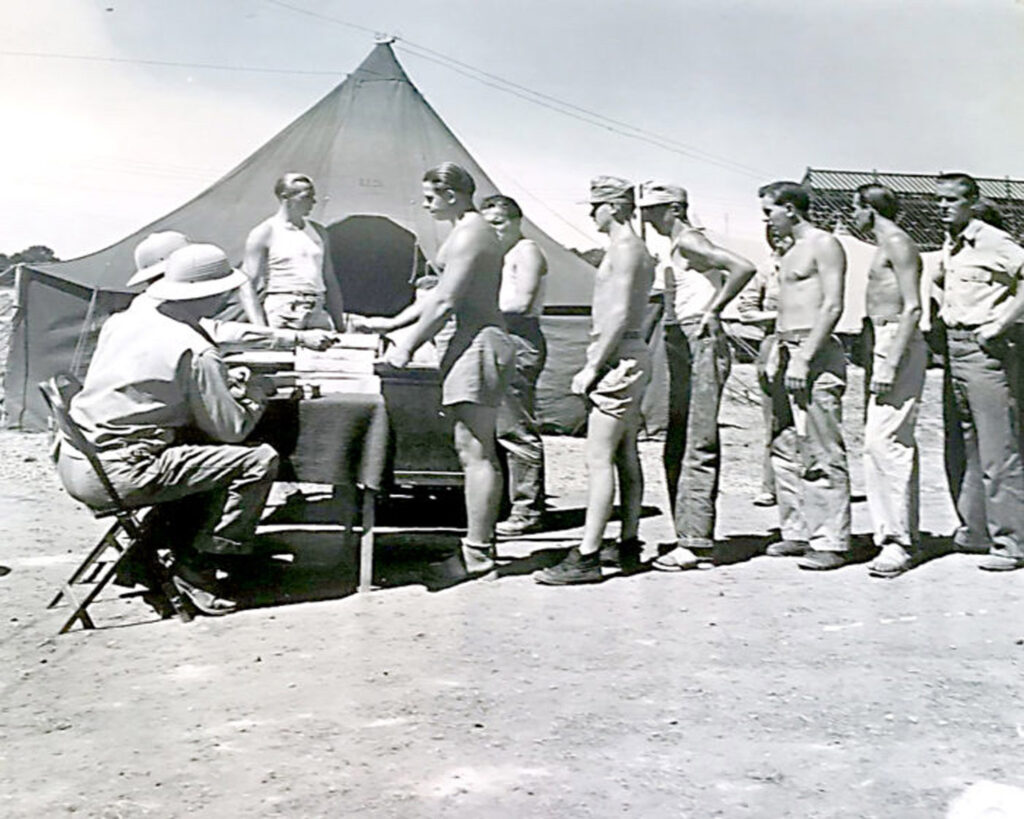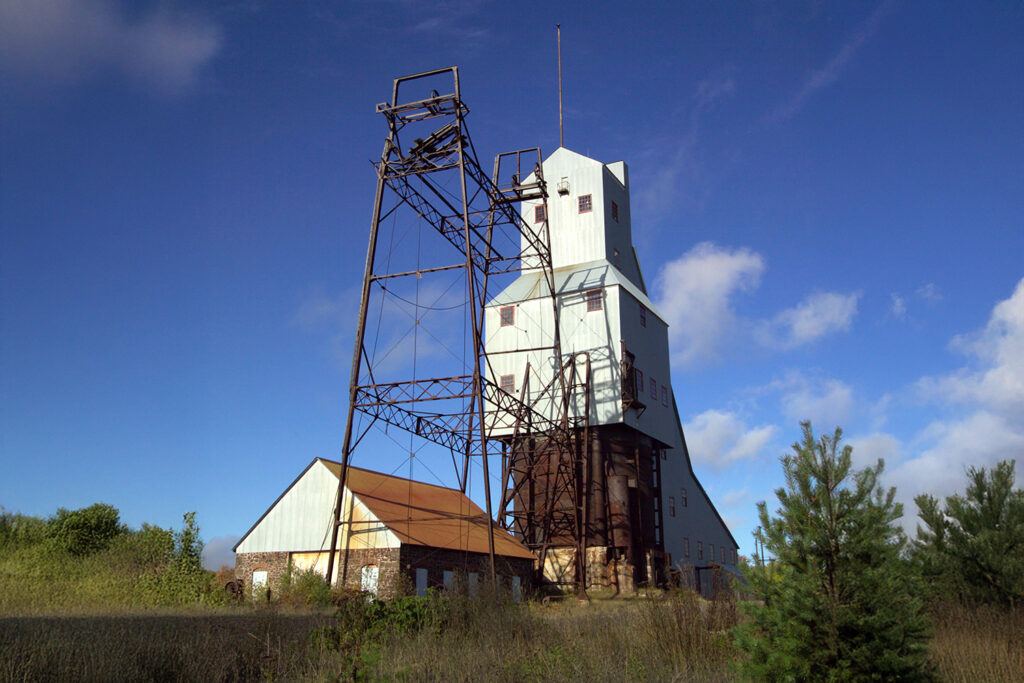For a German soldier in World War II, the best-case scenario was to get captured and sent to Michigan.
For starters, it meant you were out of danger in the war, and most of the Germans were thrilled about that. It also meant you’d be living in a campground somewhere in a small town in Michigan, spending your days picking fruit or working in a factory while you waited for your country to surrender. That certainly beat living in a ditch in France or Belgium and getting shot at every day.
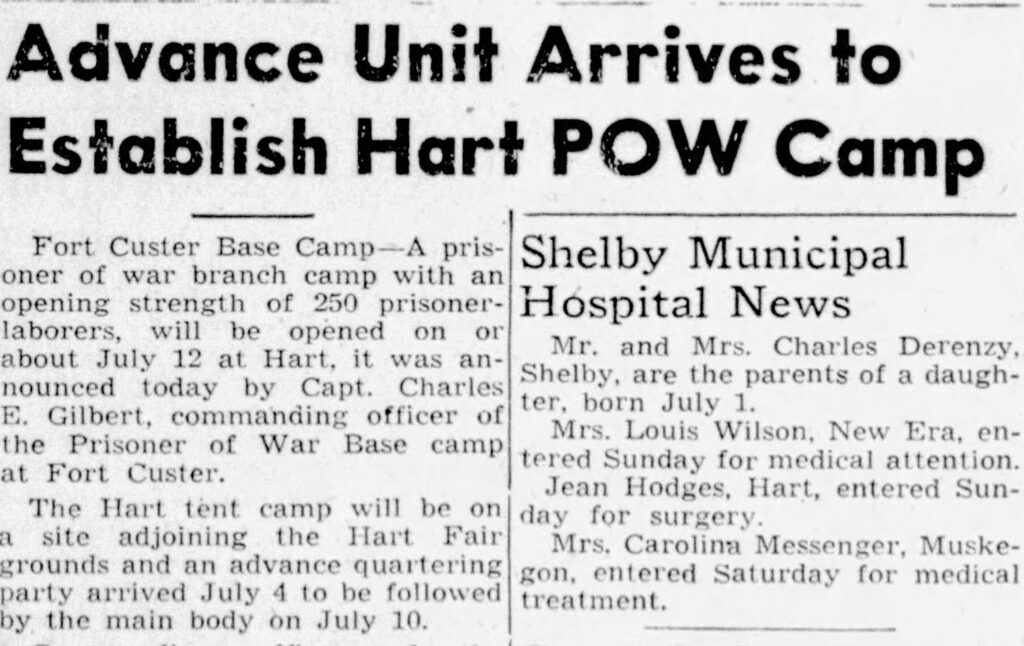
It’s a little-known fact that Michigan was home to 6,000 prisoners of war during World War II—mostly Germans, along with a few Italians—and they were spread out among 32 prisoner of war camps in both peninsulas.
Unlike the POWs who got sent to the brutal Soviet Union camps, the prisoners in the U.S. were treated extremely well. They had plenty to eat, the Red Cross constantly monitored the conditions in the camps, and there were strict rules about what kind of work you had to do.
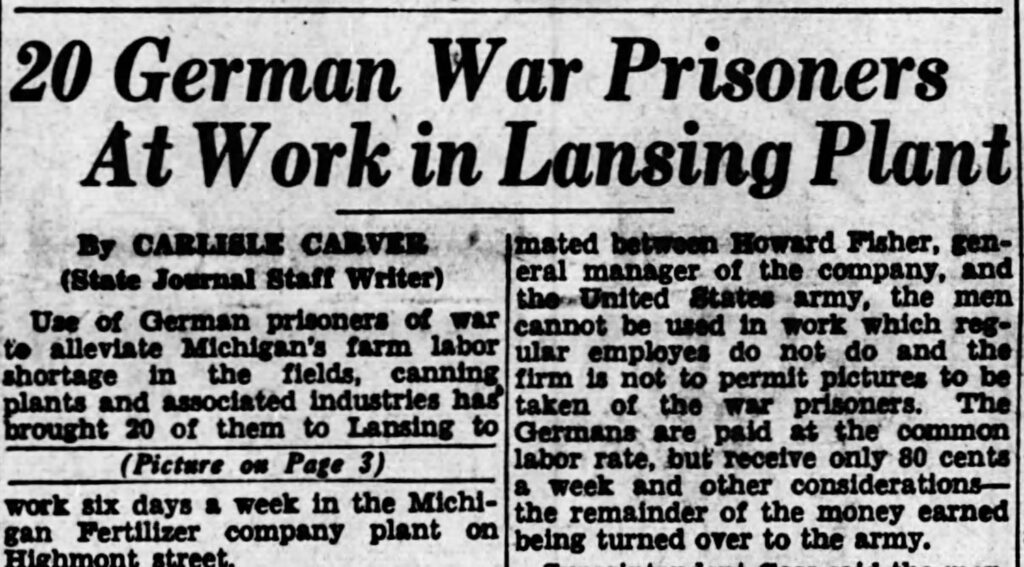
Most of the POWs arrived later in the war, in 1944 and 1945. The POW camps in England were filling up with Germans, and our boys in Europe and North Africa were capturing so many of them that the Brits ran out of room.
The U.S. offered to take them, so steamships full of German prisoners started heading across the Atlantic (on the same ships that had just carried American soldiers over to fight in the war).
They landed on the East Coast and then boarded trains bound for camps in Illinois, Michigan, Ohio, and elsewhere. All told, more than 400,000 German prisoners came to America during the war, housed in hundreds of POW camps across the country. The camps in Michigan were primarily located in small towns and rural areas.
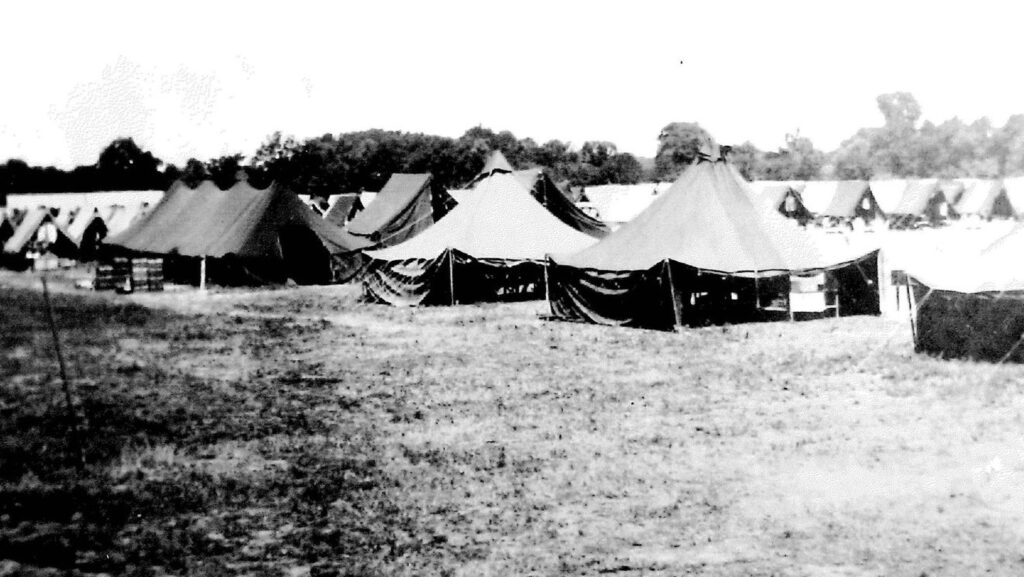
The prisoners often lived in tents set up in fairgrounds or old civilian conservation corps camps. Over in Shelby, on the state’s west side, they turned the high-school football field into a POW camp for a year.
There were American guards at each of the camps, but very few of them spoke German. It was the German officers at each camp who mostly kept order, making sure the prisoners got up on time, went where they were told, and followed the rules. Both sides were bound by the laws of the Geneva Conventions.
With so many American men off fighting the war, there was a huge shortage of workers in the fields and factories of Michigan. Enter the POWs.
The federal government made them available to any farmer or factory that wanted to hire them. The employers would pay a small wage to the prisoners, about 80 cents a day, that they could use to buy cigarettes or candy at the camp store. The farms and factories would also pay a nice fee to the U.S. Treasury for the labor.
At Camp Raco in Sault Ste. Marie, for instance, the German POWs were used to cut lumber for the local Newberry Lumber and Chemical Company. They chopped up 17,819 cords of wood in a seven-month span in 1945, and the company paid the U.S. Treasury $64,638 for the labor. It was a win-win.
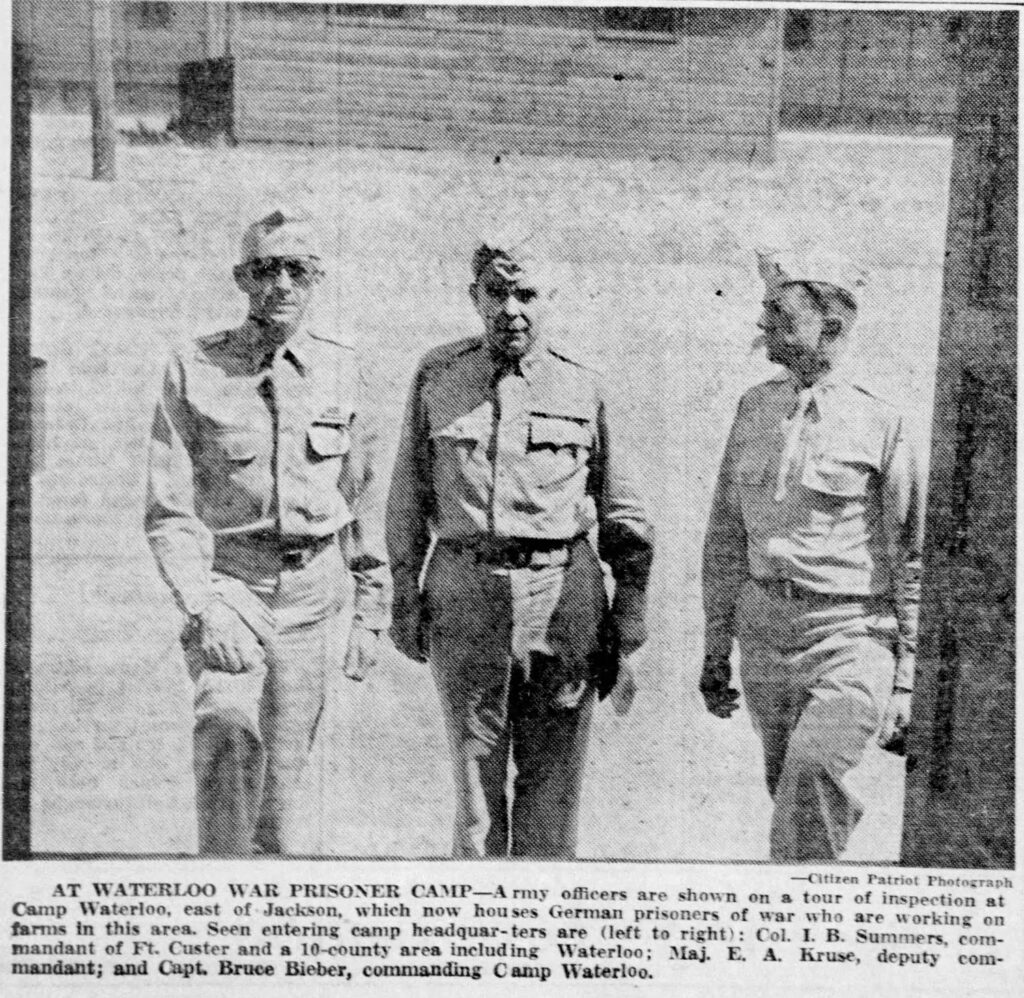
The rules were strict when it came to who had to work and what kind of work they could do. Enlisted men could be forced to work; officers could not. And they couldn’t do any kind of work directly related to the military part of the war effort. They couldn’t work in the Willow Run bomber plant, for instance, but they could work in a bakery that made bread for soldiers.
The POWs were mostly put to work in the fields, picking fruit or doing basic farm labor. All told, about 60% of the POWs in Michigan ended up working in agriculture. If you ate strawberries or apples in Michigan back in 1945, chances are they were picked by a German prisoner. The farmers and other employers were thrilled to have such a steady source of labor.
It took a while for the locals to warm up to having German soldiers living in tents just down the street, but eventually, they got used to it. In some cases, they even embraced it. Local churches would occasionally invite the POWs to attend services and feed them afterward.
By most accounts, the POWs were well-behaved and never caused any problems. Nobody really wanted to escape, because nobody wanted to go back to the war. Life at a POW camp in Owosso was far better than life at the Russian front.
Only about 2,000 of the 435,000 German POWs in the U.S. tried to escape, and most of those were only trying to escape because they didn’t want to get sent back to Germany after the war.
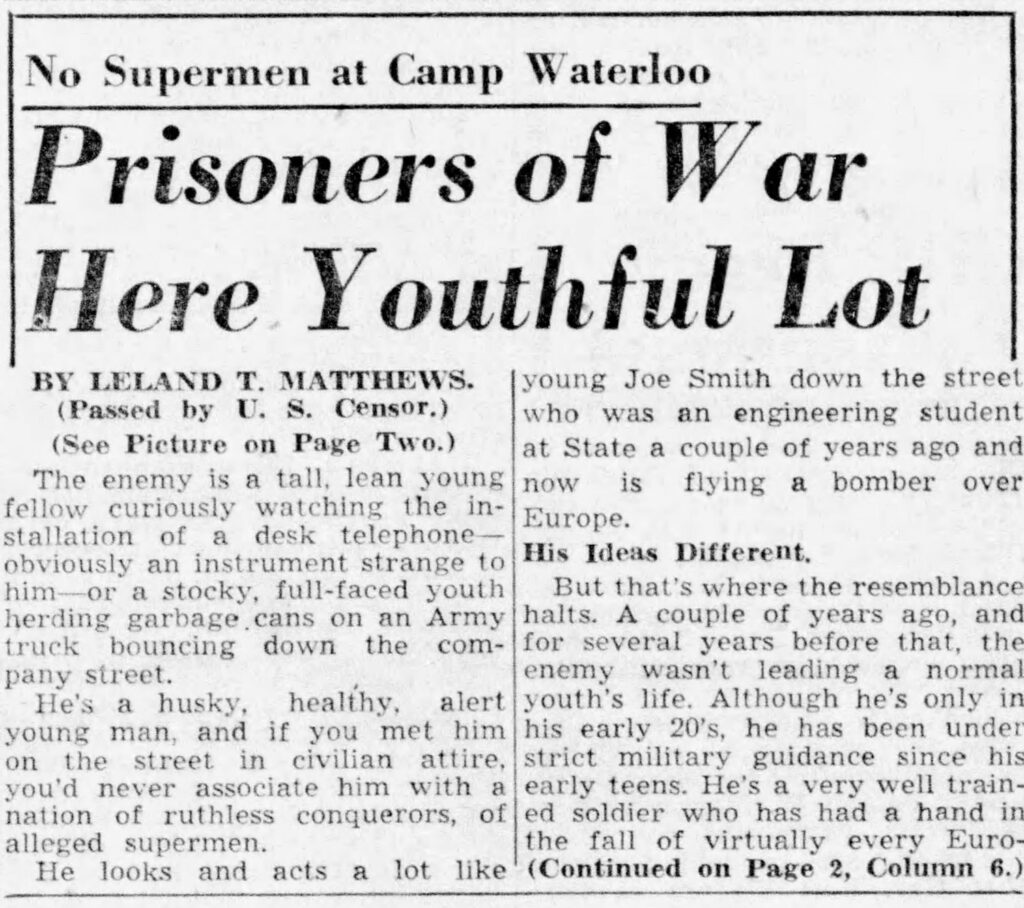
Just about the only reported trouble with the POWs took place at the Michigan Fertilizer Co. in Lansing. The plant supervisors needed some workers in 1944, so they contracted with the U.S. Army to get 20 German POWs from Camp Waterloo near Chelsea, about 50 miles away.
The fertilizer company sent a bus to Waterloo every morning to pick up the prisoners and bring them to Lansing. The POWs would be required to work a 48-hour workweek, Monday through Saturday. The Lansing State Journal reported, “Superintendent R.F. Cass said the men, who are well-built and clean-cut, are mostly used in unloading cars of fertilizer ingredients and do work in the warehouse and on the dock loading outgoing trucks.”
Ah, but as well-built and clean-cut as they were, the Germans also decided to cause a little trouble at the Michigan Fertilizer Co. The first problem was that they weren’t exactly busting their asses to get those fertilizer ingredients unloaded. “[Cass] said they are ‘slow’ workers, indicating that they are still working for Hitler.”
The other thing they did to indicate that they were “still working for Hitler” was that when the supervisors weren’t looking, they would draw swastikas in some of the fertilizer supplies. They “soon quit when we ignored their actions,” Cass said.
In terms of mayhem caused by the German prisoners in Michigan back in 1944 and 1945, that was about the worst of it. When Hitler killed himself in the Berlin bunker and the Germans surrendered on May 7, 1945, many of the prisoners were loaded onto trains and then ships and sent back to Germany, but some chose to remain in America and keep working. The last of the POWs didn’t leave until 1946.
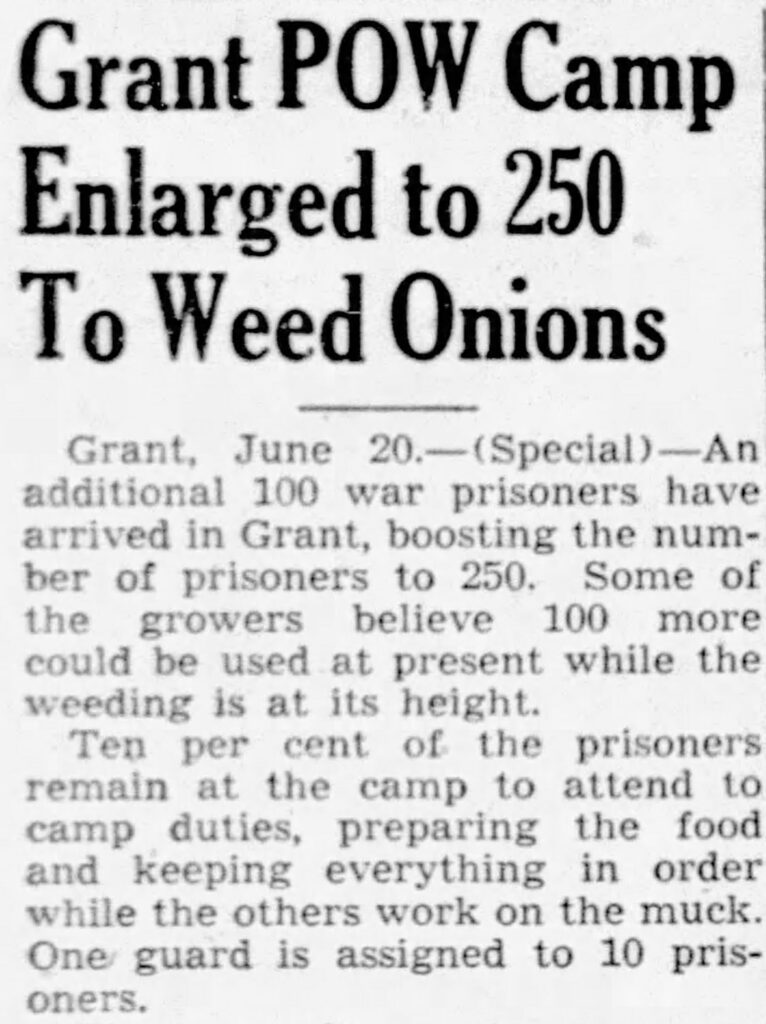
Before they were sent back to Germany, though, the U.S. government required each German to watch a documentary about the atrocities of the Holocaust.
The Germans were treated so well in Michigan that some of them wrote letters after the war to the farmers and factory workers they had met. A few of them even emigrated to the U.S.
Arnold Kammer, a scholar and history professor at Texas A&M University, studied the POW camps extensively and interviewed many former prisoners.
“I’ve yet to meet a German prisoner who didn’t tell me it was the time of their lives,” he reported.
Buddy Moorehouse teaches documentary filmmaking at Hillsdale College.
